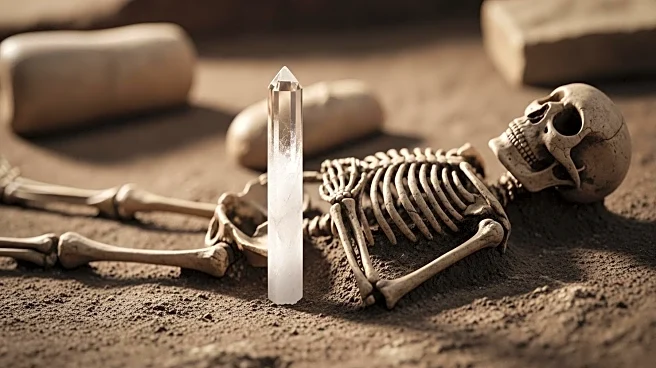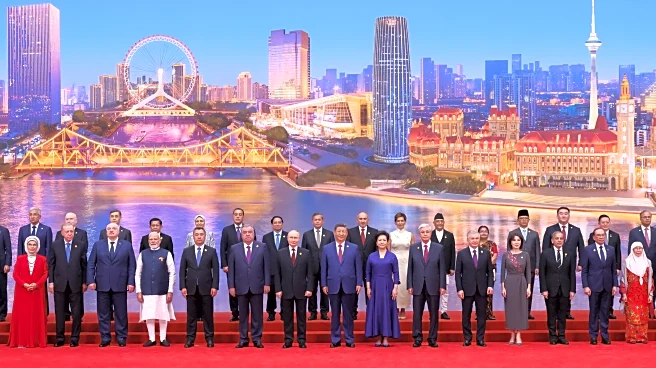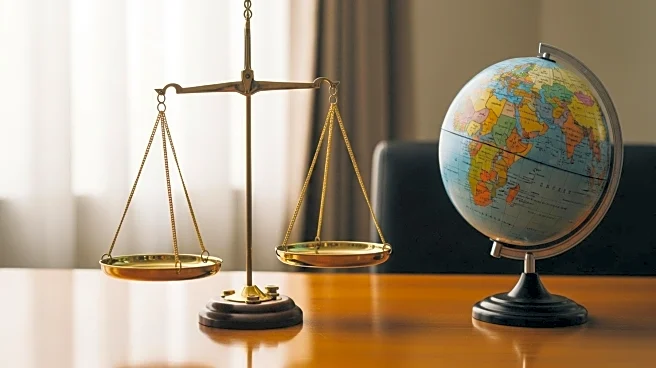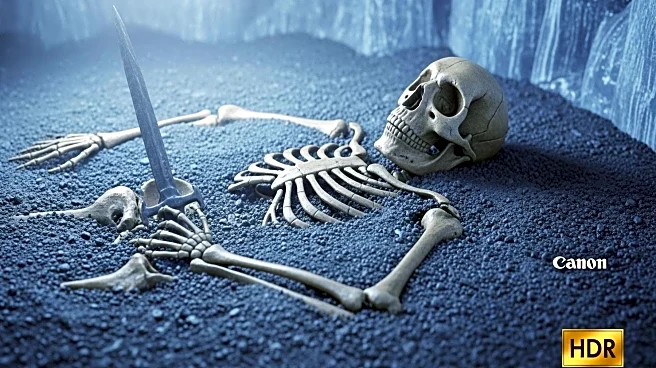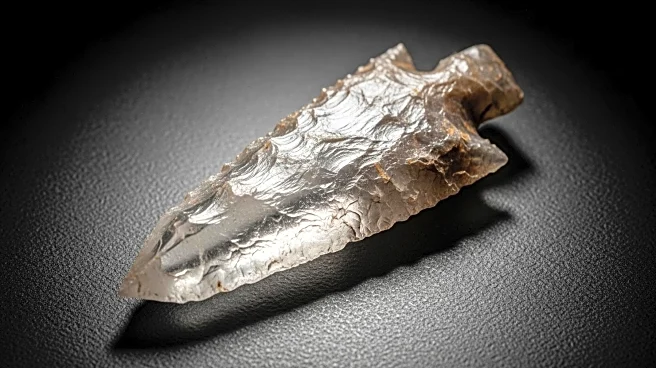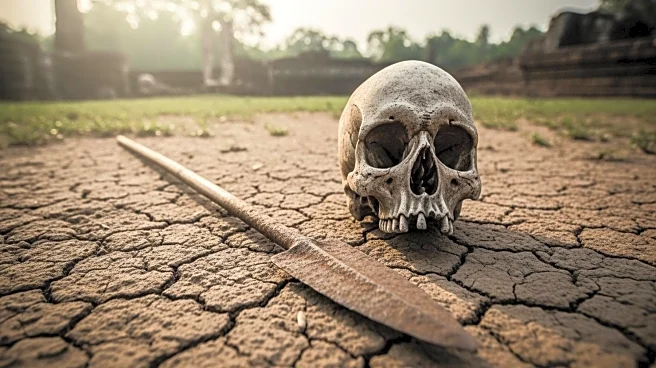What's Happening?
A team of scientists has uncovered a well-preserved human skeleton in Vietnam, dating back approximately 12,000 years to the Ice Age. The skeleton, belonging to a man who died at around 35 years old, was found with a quartz-tipped projectile embedded in his neck, indicating a violent encounter. The discovery, reported in the journal Proceedings of the Royal Society B: Biological Sciences, reveals the oldest human mitochondrial DNA found in Southeast Asia. The man survived for months after the injury, which eventually led to an infection and his death. The skeleton was buried in the Thung Binh 1 cave, part of the Tràng An Landscape Complex, a UNESCO World Heritage Site. This find provides rare insight into the lives of hunter-gatherers during the Late Pleistocene era.
Why It's Important?
The discovery of this skeleton is significant as it offers a glimpse into the interpersonal violence and survival strategies of ancient hunter-gatherer societies in Southeast Asia. The presence of a quartz-tipped tool, not found elsewhere in the cave, suggests possible interactions or conflicts between different populations. This adds to the limited examples of violence from the Pleistocene era, contrasting with more abundant evidence from the Holocene. The study enhances understanding of human migration and adaptation in prehistoric times, contributing to the broader narrative of human evolution and societal development.
What's Next?
Further archaeological work is needed to reconstruct the circumstances surrounding the man's death and to explore the possibility of violence between different populations. Researchers aim to investigate the origins of the quartz tool and its implications for understanding regional interactions during the Late Pleistocene. Continued excavation and analysis in the region may uncover more evidence of ancient human activities and interactions, providing deeper insights into the social dynamics of early hunter-gatherer communities.
Beyond the Headlines
The discovery raises questions about the ethical and cultural dimensions of violence in prehistoric societies. It challenges assumptions about peaceful coexistence among early human groups and highlights the complexity of human interactions. The burial practices observed suggest a level of care and community support, indicating social structures that valued individuals even in death. This find may prompt reevaluation of the narratives surrounding ancient human societies and their development.
